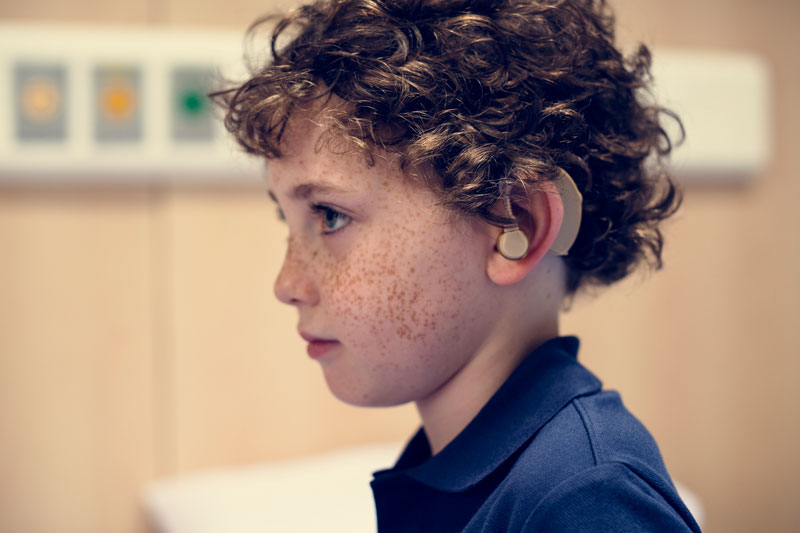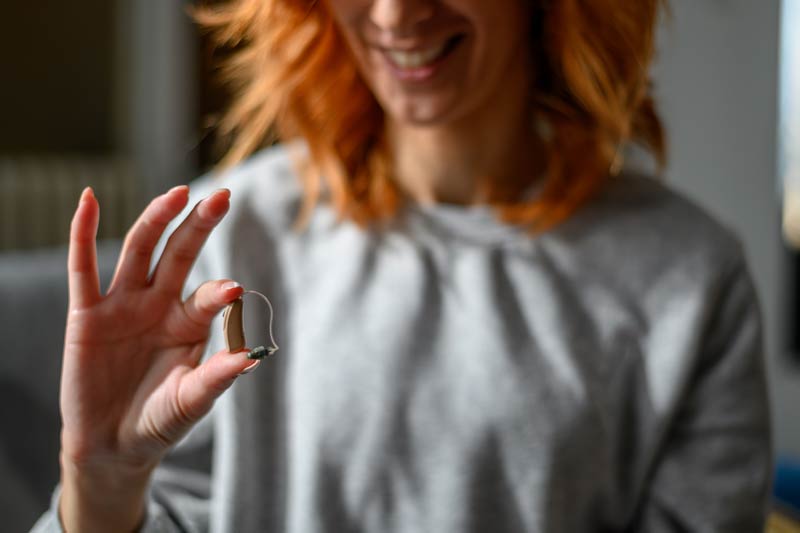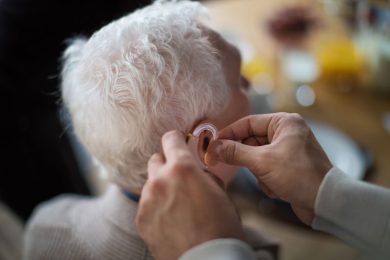How Do Hearing Aids Work?
Hearing aids carry sounds from the environment into your ear and make them louder. Most hearing aids are digital, and all are powered with a traditional hearing aid battery or a rechargeable battery.
Small microphones collect sounds from the environment. A computer chip with an amplifier converts the incoming sound into digital code. It analyzes and adjusts the sound based on your custom hearing loss settings, listening needs and the level of the sounds around you. The amplified signals are then converted back into sound waves and delivered to your ears through speakers, sometimes called receivers.
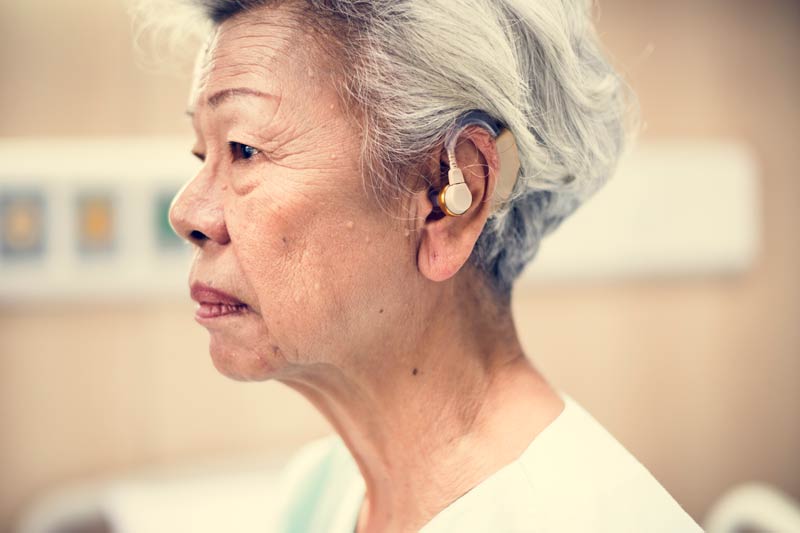
What Kinds of Hearing Aids are Available?
Hearing aids come in a variety of sizes and styles, each with its own set of benefits and drawbacks. The smallest and least visible hearing aids are usually the most expensive, but may not provide as much power and amplification as larger models. Here is a brief overview of some of the most common hearing aid styles:
In-the-ear (ITE) hearing aids are custom-made to fit snugly inside your outer ear.
Behind-the-ear (BTE) hearing aids rest outside of the ear, with a tube that runs from the body of the aid into the ear canal.
In-the-canal (ITC) and completely-in-the-canal (CIC) hearing aids are custom made to fit snugly inside your ear canal.
Receiver-in-canal (RIC) hearing aids are similar in size and shape to ITC and CIC aids, but the speaker (or receiver) is located outside of the ear canal in a small plastic case that rests behind the ear.
Pediatric: There are several styles of hearing aids for adults, but children are typically fitted with Behind The Ear (BTE) hearing aids. BTE hearing aids have a casing, which sits behind the ear and houses all the electronics, which attaches over the top of the ear by wire to a speaker, which sits in the ear canal. These hearing aids are the most powerful and effective for relaying consistent, understandable sound. Due to their reliability and power, they are considered the best option for children whose language skills development is a higher priority than cosmetic concerns.
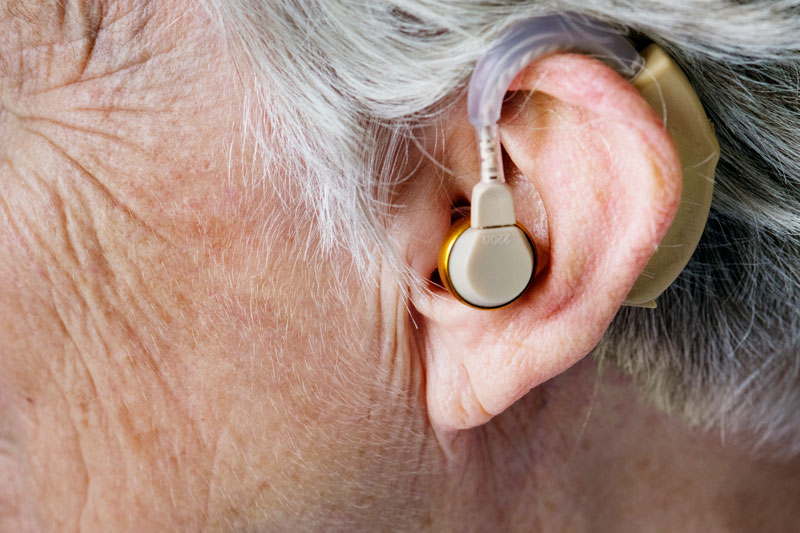
How are Hearing Aids Fit for Me?
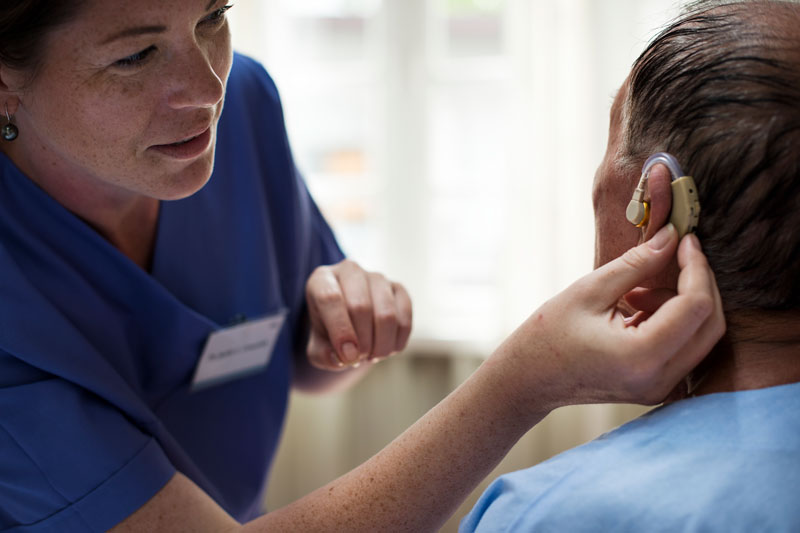
Choosing a Hearing Aid
If you are experiencing hearing loss, a hearing aid may be a good option for you. But with so many different types and features available, how do you choose the right one?
Here are a few things to consider when selecting a hearing aid:
1. The type of hearing loss you have. There are two main types of hearing loss: conductive and sensorineural. Conductive hearing loss occurs when there is a problem with the outer or middle ear, preventing sound from being conducted to the inner ear. Sensorineural hearing loss is caused by damage to the inner ear (or auditory nerve) and is the most common type of permanent hearing loss.
2. The severity of your hearing loss. Hearing loss is categorized as mild, moderate, severe, or profound. The severity will impact what type of hearing aid is best for you.
3. Your lifestyle and listening needs. Do you work in a noisy environment? Do you enjoy watching TV or going to the movies? Consider how and where you will be using your hearing aid when making your selection.
4. Your budget. Hearing aids range in price from a few hundred dollars to several thousand dollars. Choose the best option for your needs; and be sure to ask about what your insurance covers.
5. The features you want. Today’s hearing aids offer a variety of features, such as Bluetooth compatibility, rechargeable batteries, and directional microphones. Consider which features are most important to you.
6. The size you want. Hearing aids come in a variety of sizes, from completely invisible to larger behind-the-ear models. Choose the size that best suits your needs and preferences.
The audiology team at Texoma ENT & Allergy is dedicated to working with you to identify the best solution for your hearing needs. They provide a personalized approach to hearing care to ensure you receive the device and care that meets your lifestyle needs.
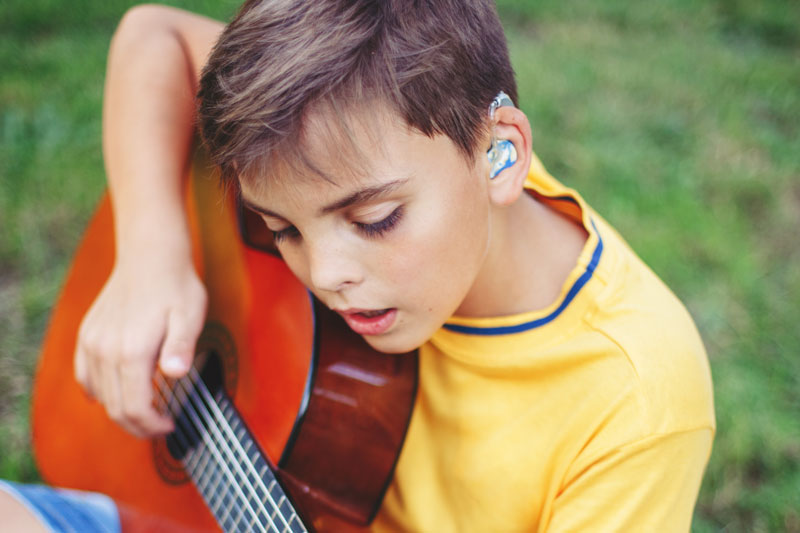
Hearing Aid Accessories
